Tired of Your Pink Plants Fading? Here’s How to Keep Them Vibrant
I’ve been elbows-deep in soil for what feels like a lifetime, moving from huge commercial greenhouses to designing custom plant arrangements for people’s homes. For the longest time, my world was a sea of green. But lately, wow—the demand for colorful leaves has just exploded. And right at the center of it all are the pinks.
In this article
From the delicate speckles on a Polka Dot Plant to the bold, splashy leaves of a Pink Princess Philodendron, these plants just have something special. They bring a kind of warmth and personality to a room that’s hard to replicate.
But here’s the catch. So many people grab one of these beauties from a nursery, picturing that perfect look in their living room. The problem is, that vibrant pink isn’t a given. It’s a fragile genetic trait that demands the right kind of care. Without it, those gorgeous pinks can fade to a dull brown or just disappear completely, reverting back to plain old green. I’ve seen it happen more times than I can count. A client will call me up, totally frustrated, wondering why their expensive plant looks nothing like it did when they bought it.
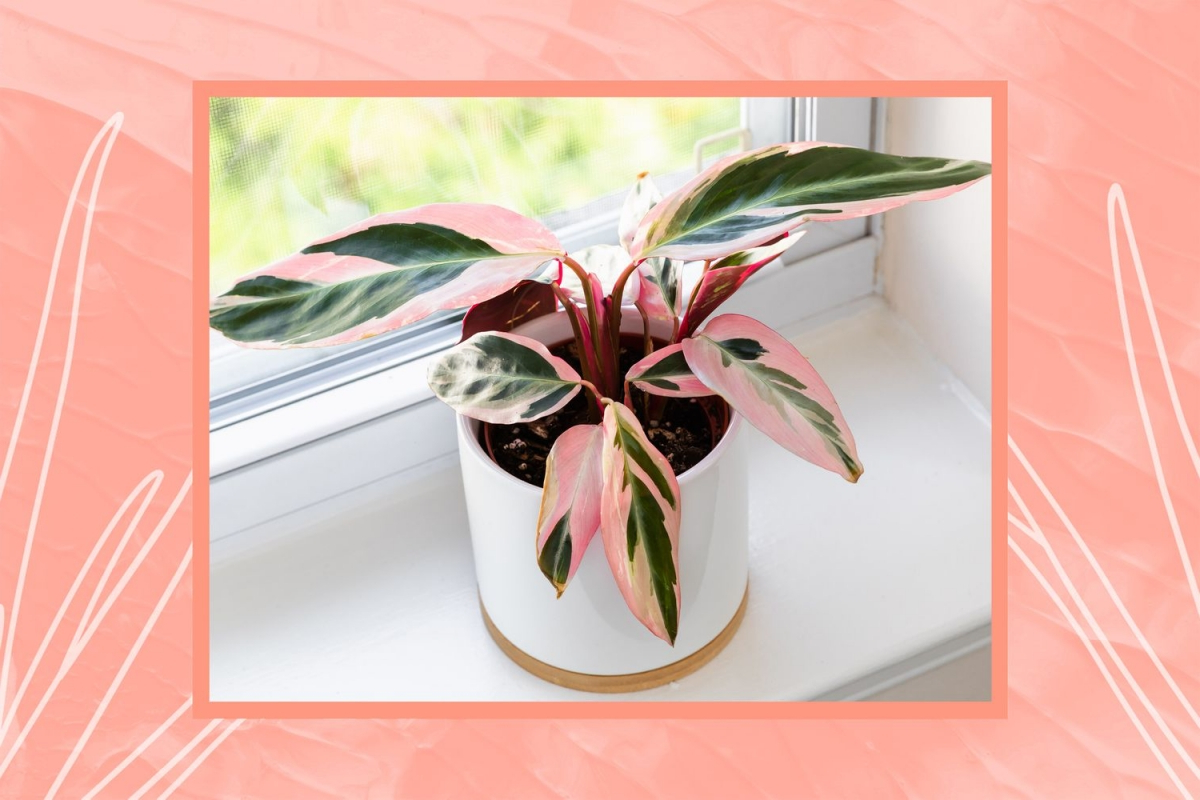
So, this guide is my answer to that exact question. It’s not about fleeting trends; it’s about the simple, practical craft of keeping a plant happy. We’ll get into why these leaves are pink in the first place, and then I’ll walk you through the nitty-gritty of soil, light, and water that I use every day. These are the hard-won lessons that will help you not just own a pink plant, but actually help it thrive.
So, Why Are Some Leaves Pink Anyway?
To get this right, you first have to understand what’s going on inside the leaf. A plant’s standard green color comes from chlorophyll. You probably remember that from science class—it’s the stuff that lets plants absorb sunlight and turn it into food. It’s absolutely essential for survival.
The pinks, reds, and purples? Those come from a whole different set of pigments called anthocyanins. These pigments don’t really help with photosynthesis. Instead, think of them as the plant’s natural sunscreen. Their main job is to protect the leaf from getting scorched by intense light. They can also offer a bit of protection from cold or other environmental stress.
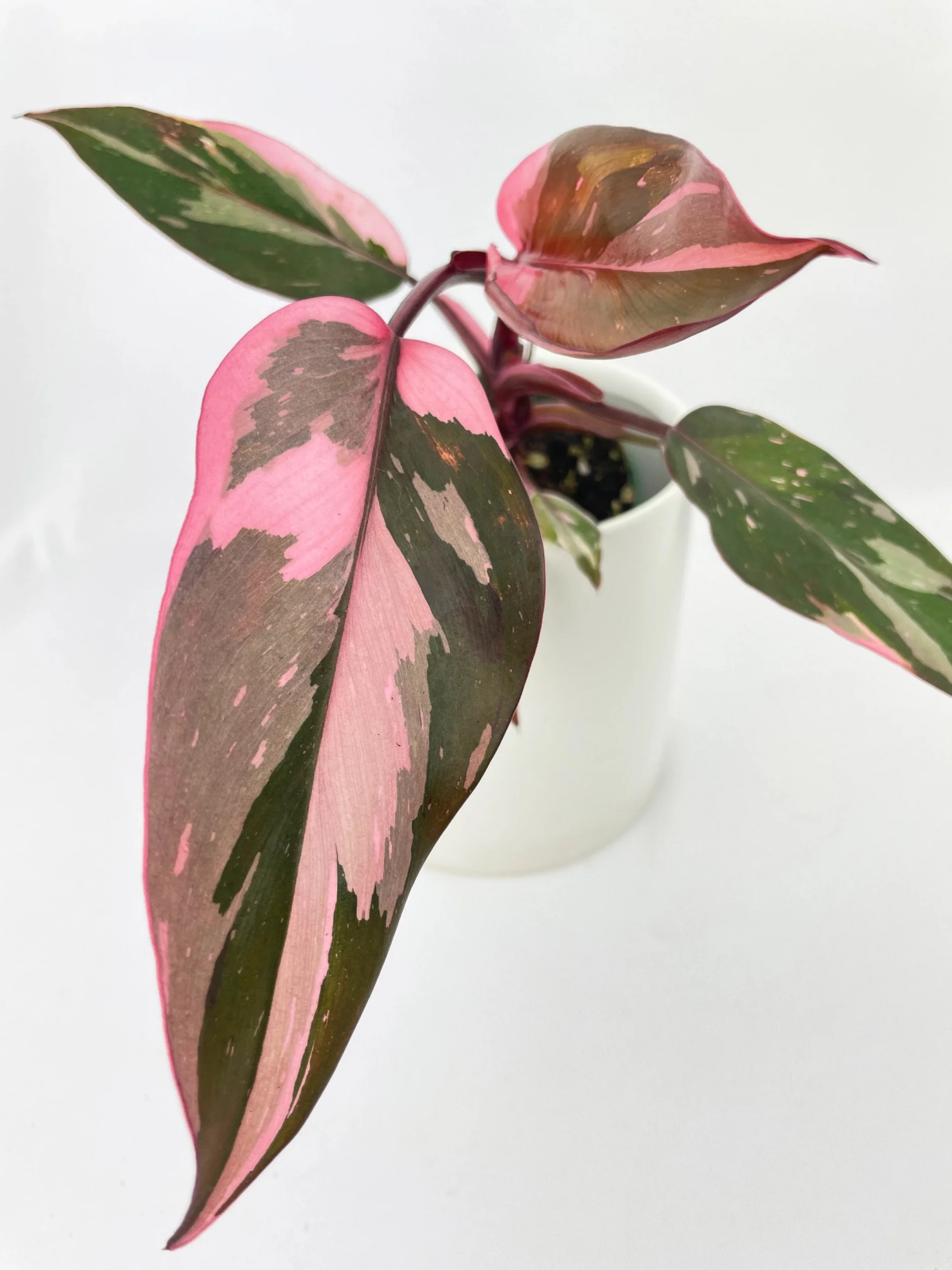
The term for this is variegation, which is just a fancy word for having different colored zones on a leaf. It’s caused by a genetic mutation where some cells forget how to make chlorophyll. In those spots, the green disappears, and the underlying pink anthocyanins get to show off. That stunning leaf on a Pink Princess is a patchwork quilt: the green parts are making food, and the pink parts are just looking pretty (and providing a little sun protection).
Heads up, though: this variegation is often unstable. A plant’s number one priority is to survive, and since pink patches don’t make food, the plant is biologically programmed to create more green, food-producing cells. This is called reversion. If a plant isn’t getting enough light, it will panic and work even harder to make more chlorophyll, causing your beautiful pink to fade away. Our job, as plant parents, is to find that perfect sweet spot of care that encourages the plant to keep its less-efficient but way more beautiful colors.
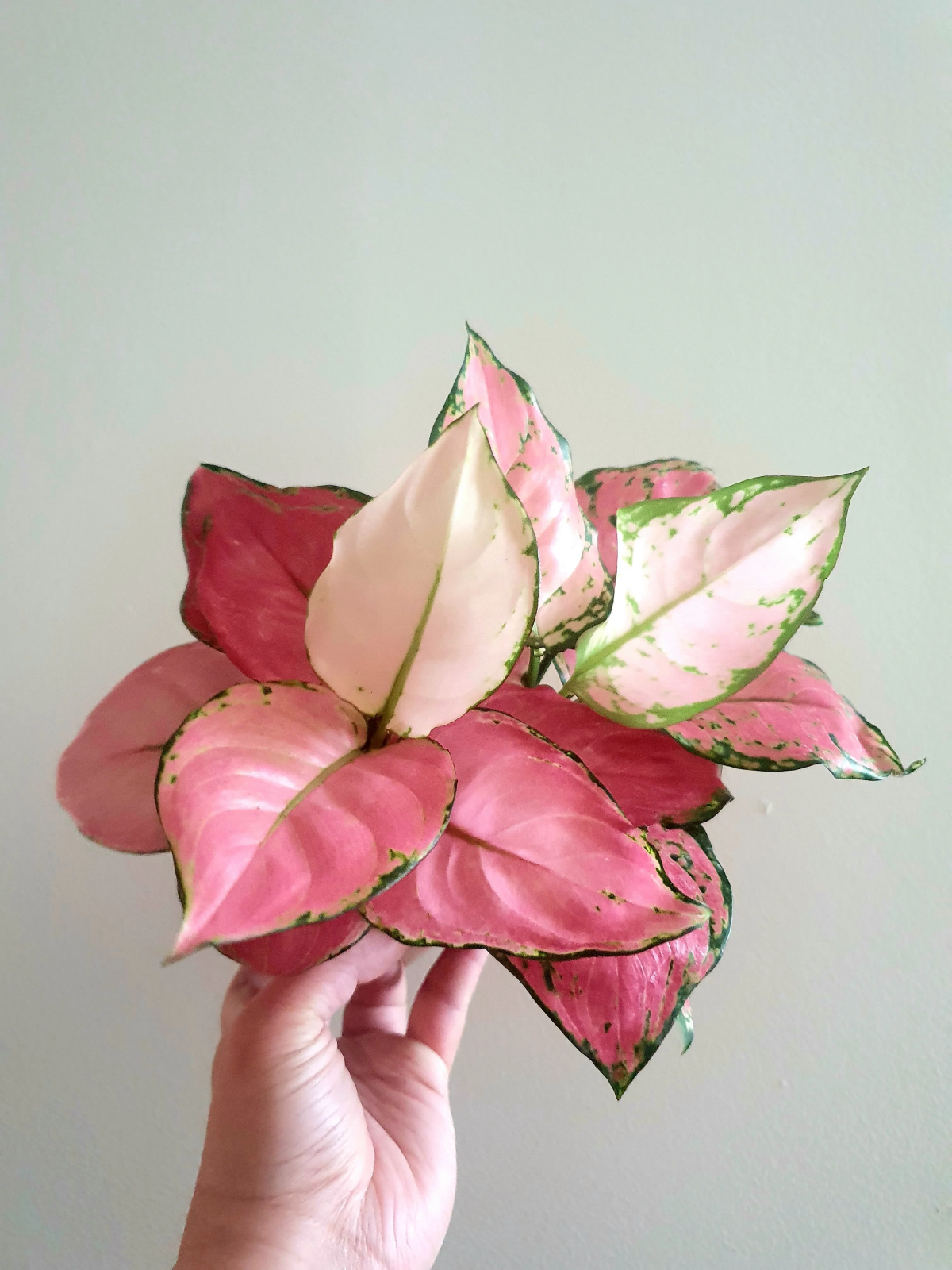
It All Starts with the Right Foundation: Soil & Pots
Honestly, that generic, all-purpose potting soil you grab in a big bag at the store just isn’t going to cut it for these plants. Most of that stuff is too dense, holds way too much water, and has zero aeration. This is a fast track to compacted soil and the dreaded root rot. I learned a long time ago that mixing my own soil is the single most impactful thing I can do. It gives you total control over drainage and airflow, which is everything for tropicals like Philodendrons and their cousins.
My Go-To Chunky Soil Mix
When I’m potting up these types of plants, I use a super simple but effective recipe. It’s designed to be light and airy, kind of like the forest floor where they’d naturally grow among loose debris.
- 1 Part Good Potting Soil: This is your base for nutrients and a bit of moisture retention. Don’t cheap out here; get a quality indoor plant mix.
- 1 Part Perlite: Those little white, styrofoam-looking balls are actually porous volcanic rock. They create air pockets so roots can breathe. You can find this at any garden center for about $10 a bag.
- 1 Part Orchid Bark: The chunky bark pieces are key for drainage. It lets water flow through quickly, preventing a swampy situation at the bottom of the pot.
- A Handful of Horticultural Charcoal: This isn’t totally essential, but I like to add a little bit to each batch. It helps absorb impurities and keeps the soil from getting funky over time.
Quick tip: When a recipe says “part,” it just means you use the same measuring tool for everything. It could be a coffee scoop, a cup, or a small bucket—as long as you use the same one for the soil, perlite, and bark, your ratio will be perfect.
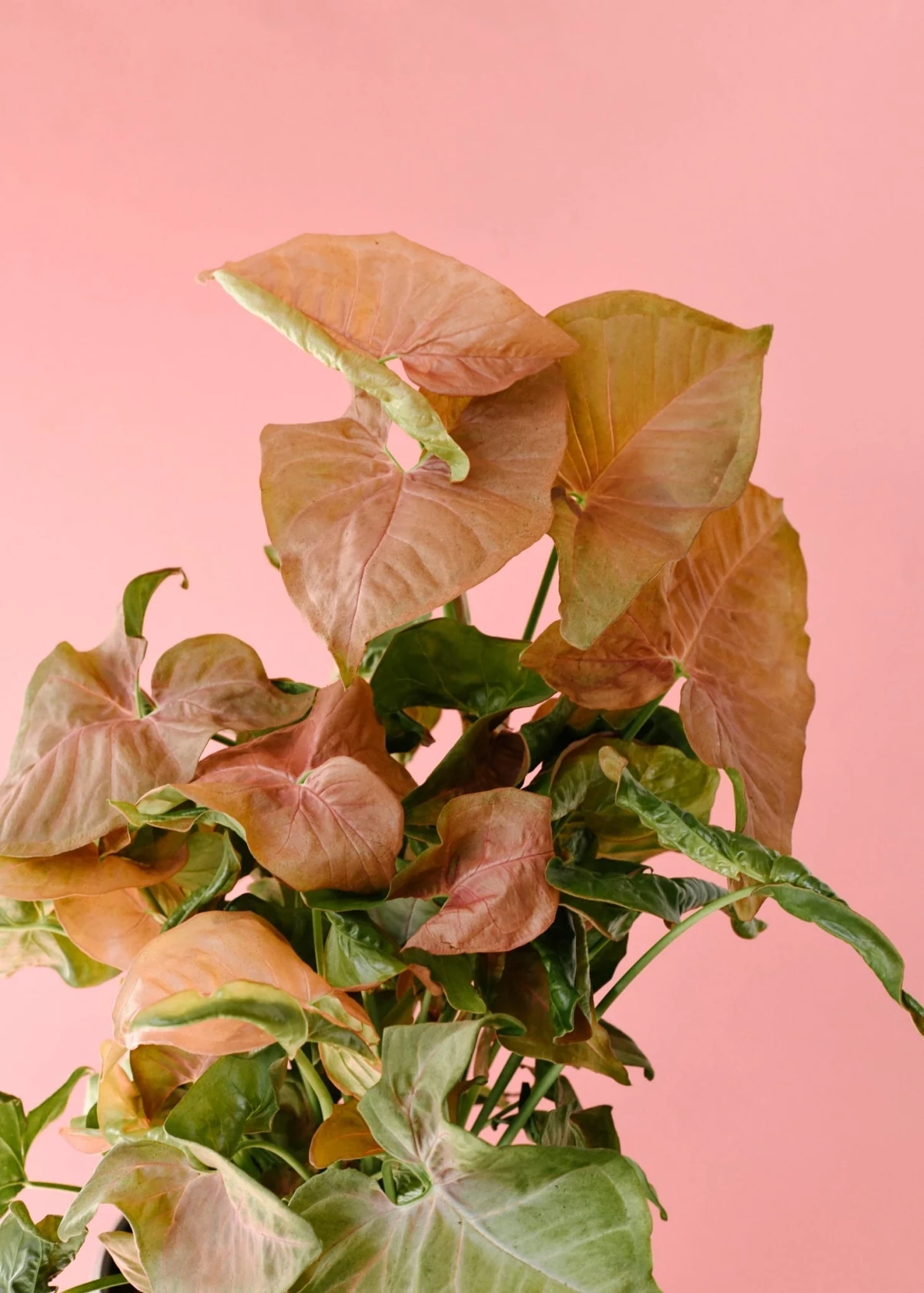
Choosing Your Pot
The pot you pick is just as important as the soil inside it. And the number one, non-negotiable rule is: it must have a drainage hole. I can’t say this enough. I once did a plant-rescue mission for a client whose gorgeous Aglaonema was yellowing and drooping. They swore they weren’t overwatering, but the fancy ceramic pot it was in had no hole. The bottom two inches were a muddy swamp, and the roots were completely rotted. We managed to save it, but it was a close call!
- Terracotta Pots: These are great if you’re an over-waterer. The clay is porous, so it breathes and allows the soil to dry out much faster.
- Plastic or Glazed Ceramic: These hold moisture for a lot longer. They’re a good choice if you live in a dry climate or tend to be a bit forgetful with watering. You just have to be extra diligent about checking the soil before you water again.
And when you repot, only go up about 1-2 inches in diameter. A pot that’s way too big holds onto too much extra soil and water, which, you guessed it, can lead to root rot.
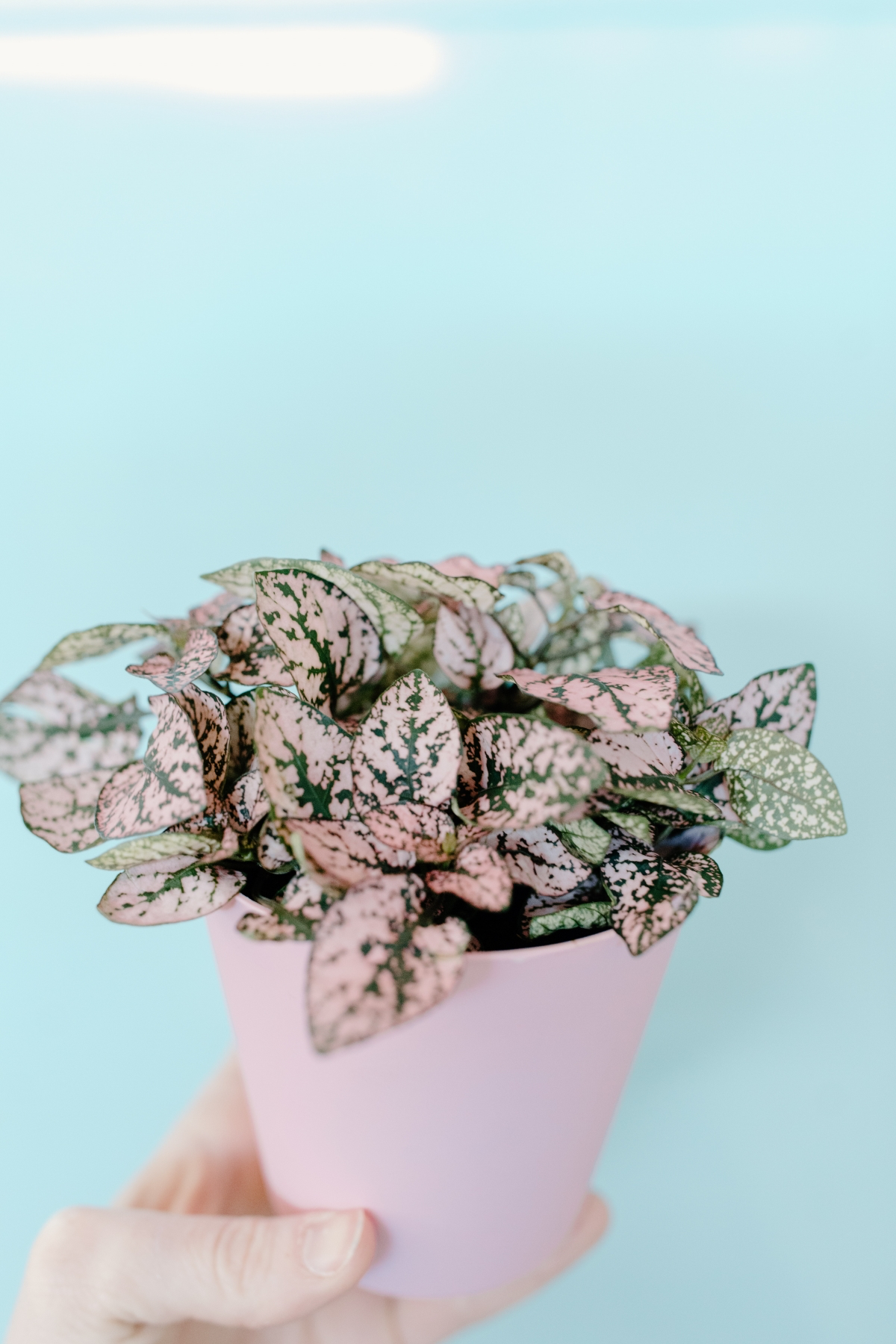
Light: The Real Secret to Keeping the Pink
If you remember one thing from this guide, make it this: light is the most critical factor for vibrant pink color. As we covered, the pink is a protective response. You need to give the plant enough light to trigger that response, but not so much direct sun that you scorch the delicate, non-pigmented parts of the leaves.
Everyone throws around the term “bright, indirect light,” but what does that actually mean in your home? It’s a spot that’s brightly lit for most of the day but where the sun’s rays don’t beat down directly on the leaves for hours on end. A little bit of direct morning sun is usually fine, but harsh afternoon sun will leave you with brown, crispy spots.
- East-facing windows are often the sweet spot. They get some gentle direct sun in the morning and then bright, indirect light the rest of the day.
- South or West-facing windows provide very intense sun. You’ll want to place your plant several feet back from the window or filter the light with a sheer curtain.
- North-facing windows give the least light. To be frank, they are rarely bright enough to maintain good pink coloration in high-demand plants like a Pink Princess.
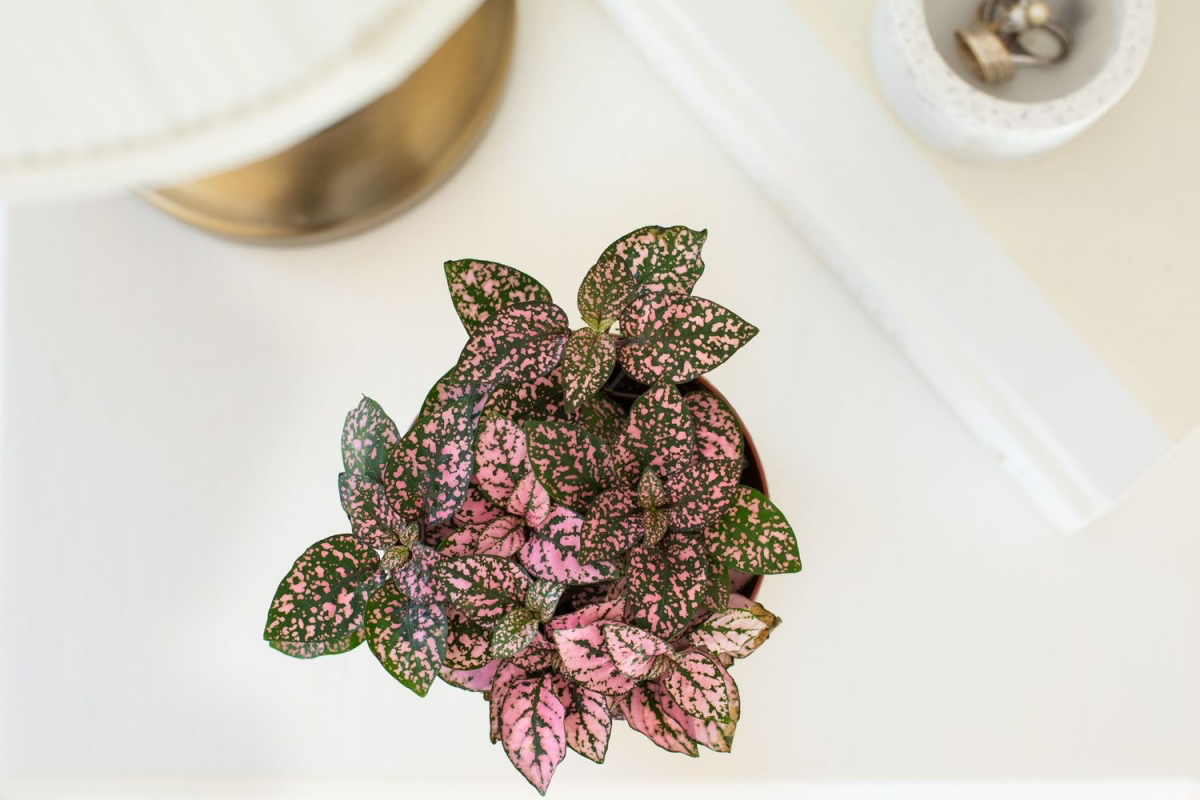
What About Grow Lights?
For a lot of us, especially in apartments or during long, dark winters, a grow light isn’t a luxury—it’s a necessity. Modern LED grow lights are super efficient and work wonders. Look for a “full-spectrum” LED light; you can find good ones online or at hardware stores for anywhere between $20 and $60. Place the light about 12-24 inches above the plant and run it for 12-14 hours a day. My pro tip? Plug it into a cheap mechanical outlet timer ($5 at any hardware store). This ensures consistency, which is what these plants crave.
Watering, Humidity, and a Little Bit of Food
One of the biggest mistakes I see is people watering on a strict schedule, like every Saturday morning. A plant’s thirst changes constantly depending on the season, light, and temperature. The only reliable way to know when to water is to check the soil.
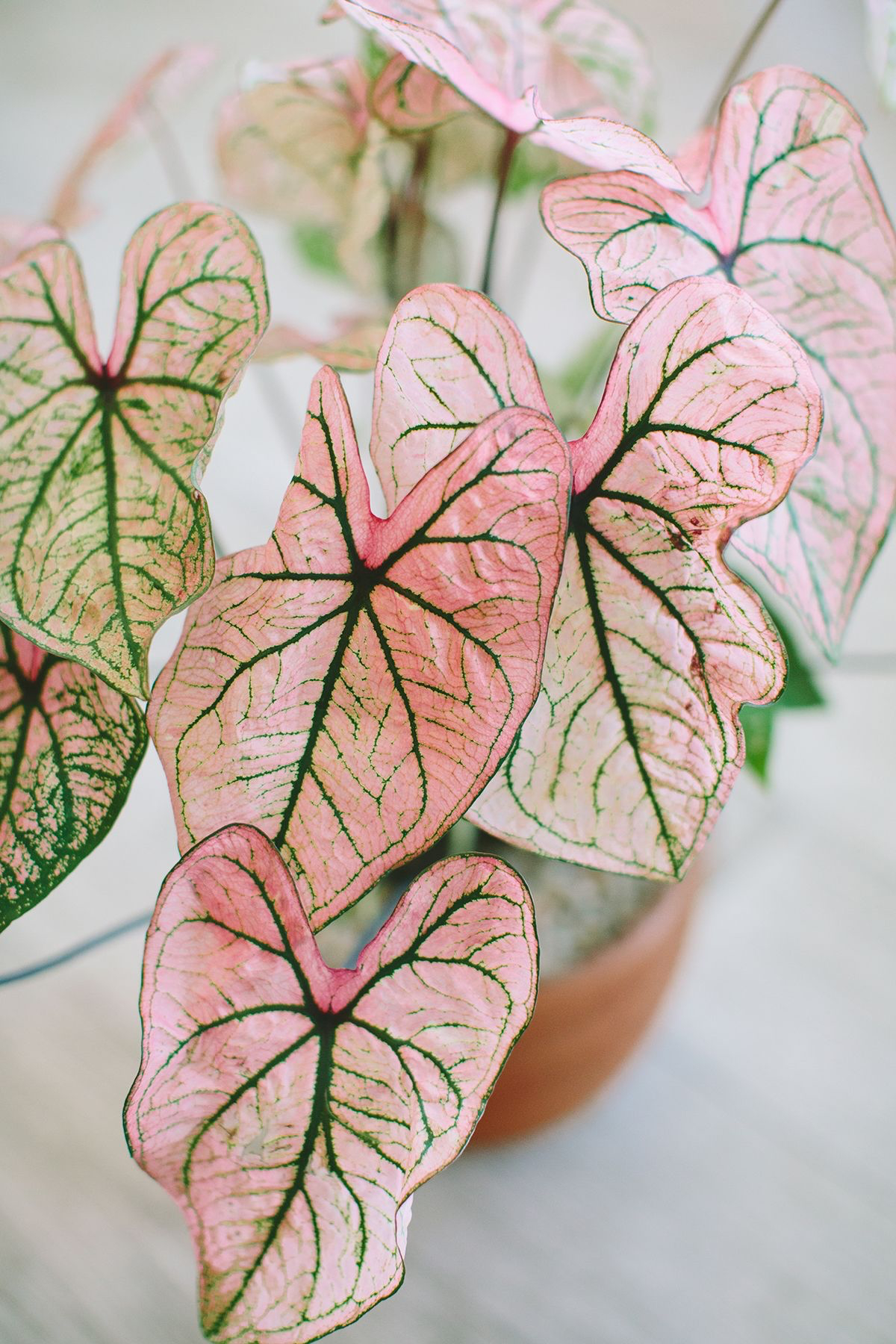
For these plants, the rule of thumb is to water thoroughly only when the top 1-2 inches of soil feel dry. Don’t just tap the surface; stick your finger right in there. If it feels dry down to your first knuckle, it’s time to water. If you feel any moisture at all, give it another day or two.
When you do water, take the plant to the sink and drench it until water pours freely from the drainage hole. This ensures the entire root ball gets hydrated and helps flush out any mineral buildup. Let it drain for a few minutes before putting it back in its spot.
Humidity: The Invisible Ingredient
These are tropical plants, meaning they evolved in humid, balmy air. Most of our homes, especially with the heat or AC running, are as dry as a desert. Low humidity is the #1 cause of those dreaded brown, crispy leaf edges. The ideal humidity level is around 50-60%. You can grab a cheap digital hygrometer for about $10 online to see where your room stands.
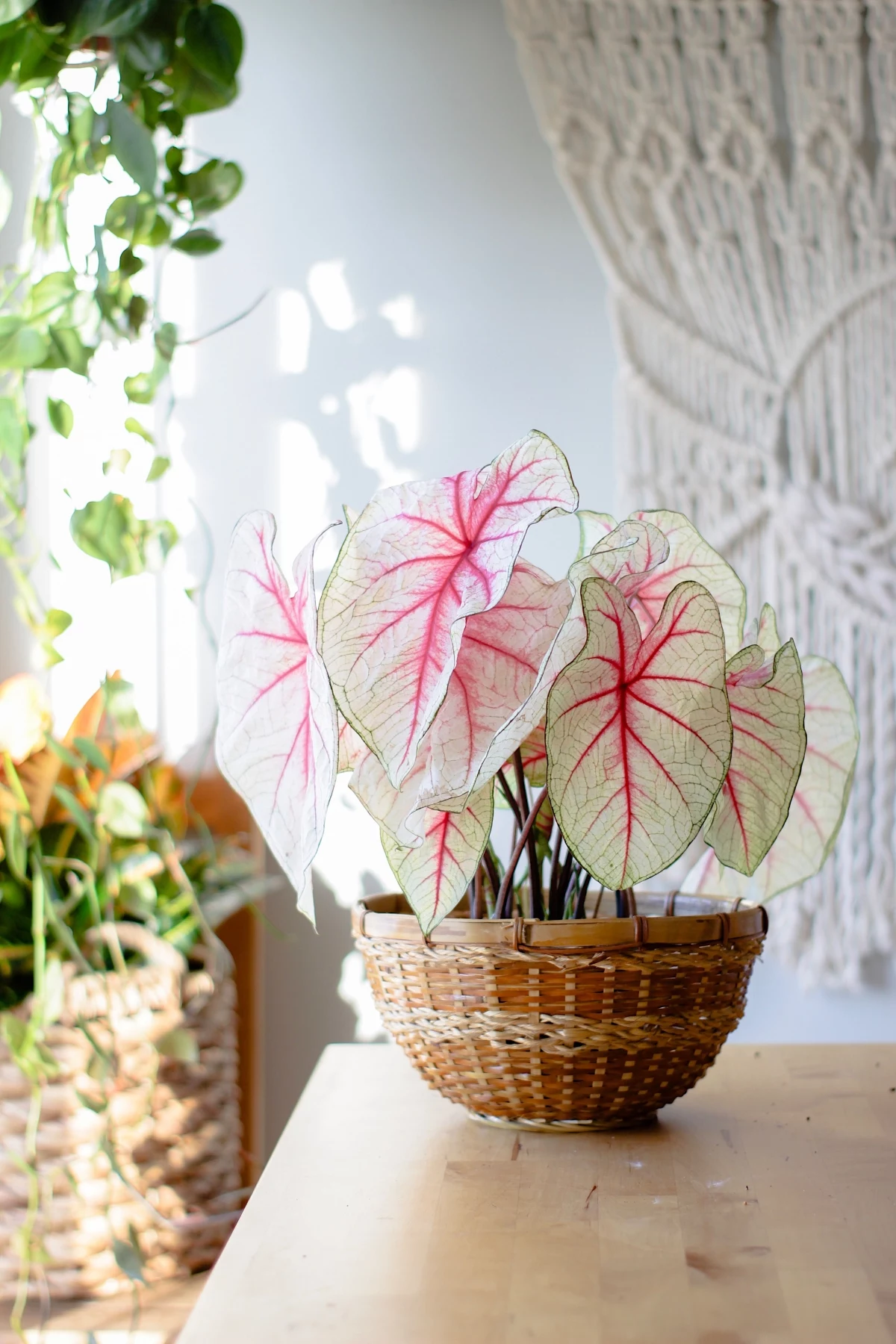
Here are the best ways to boost it:
- A Humidifier: This is, by far, the most effective method. A small cool-mist humidifier running near your plants makes a world of difference.
- Grouping Plants: Plants naturally release moisture through their leaves. Huddling them together creates a little humid microclimate. Here’s a quick win: go group all your tropicals together right now. It takes 30 seconds and creates a free humidity bubble!
- A Pebble Tray: Fill the plant’s saucer with pebbles and add water until it’s just below the top of the rocks. The pot sits on the dry pebbles, and as the water evaporates, it raises the humidity right around the plant.
By the way, while a lot of people recommend misting, I find it’s mostly a waste of time. The effect lasts only a few minutes and keeping leaves constantly wet can invite fungal problems.
Let’s Talk About Food (Fertilizer!)
It’s easy to get so focused on soil and light that you forget these plants need to eat! Good soil provides a starting point, but pushing out those beautiful new leaves takes a lot of energy. These plants are hungry, especially during the main growing season (spring and summer).
I find a balanced liquid indoor plant fertilizer works perfectly. Don’t use it full-strength, though—that can burn the roots. I dilute it to half the recommended strength on the bottle. Then, I feed my pink plants with this diluted mix about every other time I water them during the spring and summer. Think of it as a vitamin shot that keeps the new growth coming. In the fall and winter, I back off and might only fertilize once a month, if at all.
A Closer Look at the Popular Pink Plants
Each of these plants has its own quirks. Here’s the inside scoop I’ve gathered from working with them for years.
-
Philodendron ‘Pink Princess’: This is the superstar, but it can be a diva. The real challenge is managing its variegation. If it starts putting out all-pink leaves, they’ll eventually die because they have no chlorophyll. If it puts out all-green leaves, it’s reverting. The fix for both is pruning. Use clean shears and cut the vine back to the last leaf that had a nice, balanced mix of pink and green. You’ll want to cut just after a node (that little bumpy ring on the stem where a leaf grows from—that’s the magic spot where new growth will sprout!). Be prepared for the price tag; a small 4-inch plant can run you $25-$50. If you see a healthy one for under $20, grab it! Heads up: Very toxic to pets.
-
Aglaonema (Chinese Evergreen): The pink-splashed varieties of this plant are fantastic and much more forgiving. They tolerate slightly lower light than a Pink Princess, though the color is best in a bright spot. Their main weakness is cold—they absolutely hate drafts and temps below 60°F (15°C). They’re a wonderful, reliable choice for a beginner. Heads up: Also toxic to pets.
-
Syngonium (Arrowhead Plant): The pink varieties of this plant are fast growers, with new leaves emerging a brilliant, electric pink. It naturally wants to vine, so if you want a bushy plant, you have to prune it regularly by pinching off the tips of the vines. It’s pretty resilient but can be a magnet for spider mites, so check the undersides of the leaves now and then. Heads up: Toxic to pets.
-
Fittonia (Nerve Plant): I lovingly call this the “drama queen” of the plant world. It wilts dramatically the second it gets a little too thirsty, collapsing like it’s dead. New owners often panic, but a good drink will have it perked back up within an hour. The real key here is high humidity; it thrives in terrariums or right next to a humidifier. Good to know: This one is non-toxic and pet-safe!
-
Hypoestes (Polka Dot Plant): A cheerful, fun plant that tends to get “leggy” fast, stretching out and losing its cute, bushy shape. To keep it compact, you absolutely must pinch back the top two leaves on each stem every week or two. It’s so high-maintenance in that regard that many people just treat it as a short-term annual. Good to know: Also non-toxic and pet-safe.
-
Caladium: These offer some of the most breathtaking pink foliage on large, paper-thin leaves. The big thing to know is that they grow from a tuber and have a mandatory dormancy period. They’ll look stunning all spring and summer, but in the fall, the leaves will yellow and die back. This is normal! Stop watering, and you can store the tuber in its dry pot until next spring. Heads up: Very toxic to pets.
Quick Troubleshooting Guide
- Problem: The pink is fading or turning green.
Cause: 99% of the time, it’s not enough light. The plant is making more green chlorophyll to survive.
Solution: Move it to a brighter spot or add a grow light. Snip off any all-green growth to encourage variegated new leaves. - Problem: Crispy, brown leaf edges.
Cause: Almost always low humidity. Could also be mineral buildup from tap water.
Solution: Boost humidity with a humidifier or pebble tray. Try using filtered or distilled water for a while and see if that helps. - Problem: Yellowing leaves, droopiness, and soil that never dries.
Cause: Overwatering and root rot. You need to act fast.
Solution: Unpot the plant and inspect the roots. Healthy roots are firm and white; rotted ones are brown, mushy, and might even smell bad. Trim off all the mushy parts with clean scissors. Repot in fresh, mostly dry, chunky soil and wait at least a week before watering again. - Problem: Tiny webs under leaves, dusty look.
Cause: Spider mites. They love dry conditions.
Solution: Isolate the plant! Give it a good rinse in the shower to knock them off, then spray the entire plant (especially leaf undersides) with insecticidal soap. Repeat every 5-7 days for a few weeks to kill them all off.
A Final Word on Safety and Enjoying the Process
It’s really important to know that many of these gorgeous plants—specifically Philodendron, Aglaonema, Syngonium, and Caladium—are toxic if chewed on or eaten. They contain sharp little crystals that can cause serious pain and irritation in the mouths of pets and small children. If you have curious cats, dogs, or toddlers, you absolutely must place these plants out of reach.
But don’t worry, you don’t have to miss out on the pink! If you need pet-safe options, you have some fantastic choices. The Fittonia and Polka Dot Plant mentioned above are both safe. For a more dramatic look, check out a Calathea Ornata (Pinstripe Calathea) or a Stromanthe Triostar—both have stunning pink variegation and are completely non-toxic.
At the end of the day, growing these plants is a journey. You’ll make mistakes, and you might even lose a plant along the way. That’s all part of it. The goal isn’t to own a flawless, static decoration. It’s to learn to listen to your plants and understand what they’re telling you. The reward is that incredible feeling of satisfaction when a new leaf on your Pink Princess finally unfurls with that perfect splash of pink. Trust me, that never gets old.










